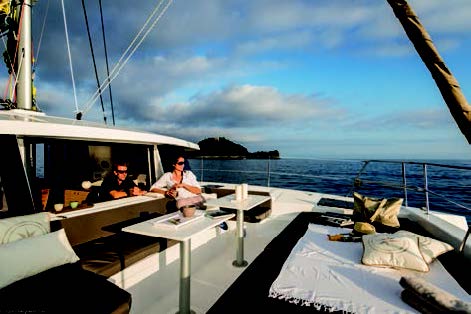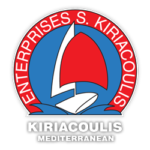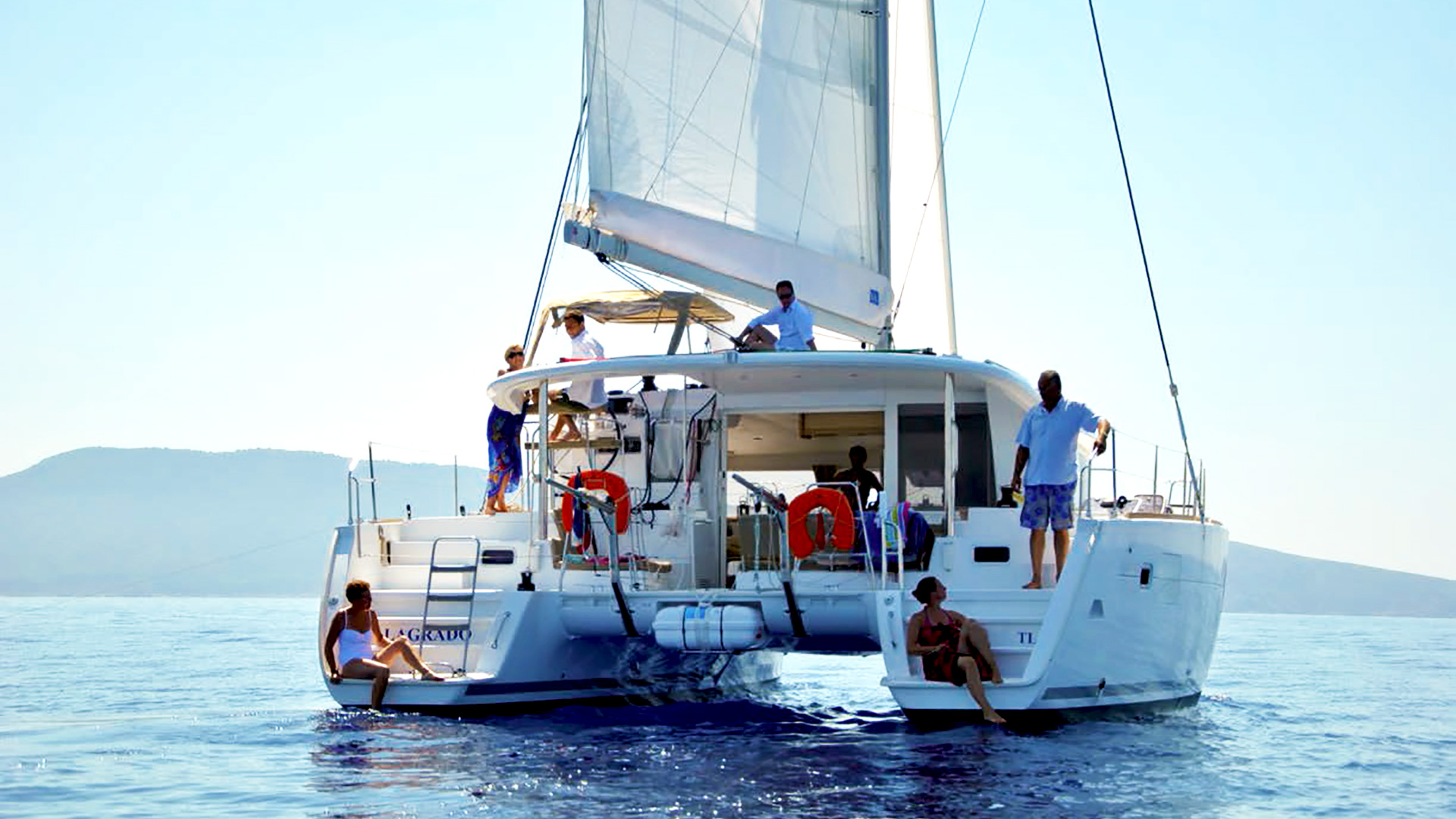
A Boat for Life – Yacht Management
New or secondhand? And why not go buy under YACHT MANAGEMENT, or how about a cat coming out of a CHARTER FLEET?
Lagrado: a Lagoon 400, always a sure bet!
Let’s go straight to the heart of the matter! Arriving at the boat show, we discover the catamaran on the boat ramp slipway, in pride of place at the show! It was a clever idea to display this catamaran like this during the show, and to allow the public to view like this! In the company of Romain Villeneau and Odon van Gaver, we carry out a detailed evaluation of every areas of the boat. Floorboards up, access to the bilges, valves, technical circuits is all possible; Followed by motors, helm linkages, tanks, interior fittings, and finally deck, cockpit, mast, rigging and anchoring gear. The second stage focuses on the exterior, the appearance of topsides, hulls, rudders and sail drives.
General overview: a nice surprise!
The first impression is clearly positive for this 5½ year-old boat; Especially as Kiriacoulis played the game and hadn’t done a complete cleaning, and made no special preparations, which would have made no sense for this demonstration. The exterior upholstery was changed because this is a real “consumable”, very exposed to ultraviolet light, but no polishing of the hulls had been done. The non-slip surface on the decks, based on the diamond pattern from the original mold, is in good condition, as are hatches and hinges. Stainless steel pulpits, stanchions and guard wires show no rust or deformation, and the poly carbonate roof panels are impeccable (their flat surfaces are small in size and are not exposed to UV radiation). The lazy bag and helm station bimini are in excellent condition.
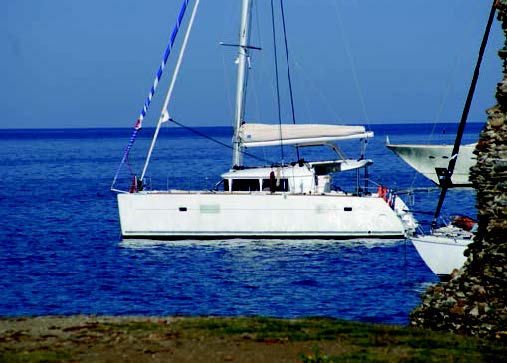
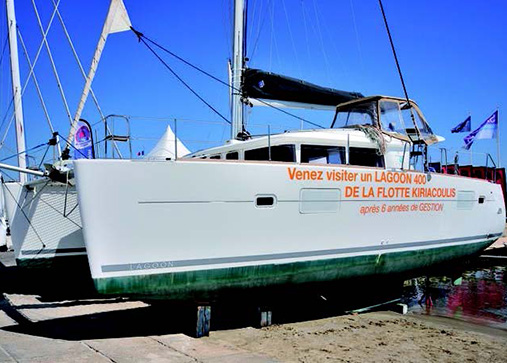
Hulls and appendages
The copper/epoxy anti fouling applied by Kiriacoulis Point d’Amure, at Bormes-les-Mimosas, seems to have fulfilled its role perfectly, and the underwater hull shows no traces of collision or impact. As for the skeg keels, their leading edges and the grounding plates are in good condition and show no signs of wear other than some superficial scratches (from Med-style mooring ground lines, or having been set down on the hard). The rudders appear good and seem to function well, without abnormal play, some traces of superficial wear at the lower end tell of encounters with small floating objects or mooring ground-lines, or even a bit of chafe on the port side; Normal for these very exposed appendages (to be dealt with, all the same!). No particular observations for the sail drives and fixed two-bladed propellers.
Hulls and topsides
A catamaran’s bows are areas which are very exposed when maneuvering in port, and absolutely not envisaged to be used like the fenders on a car: in the case of Lagrado, they seem surprisingly devoid of signs of mistreatment, much like sugar scoops. The port-lights and hatches, installed in recesses, are in good condition, as are the whole of the topsides, bearing witness to careful use! The escape hatches are in good condition, as are stainless steel water and air deflectors on the outside. The underside of the nacelle is impeccable, as is the gull wing shape of its forward end. The overall appearance of the gel coat is quite satisfactory, and a professional polish using suitable products, a good electric polisher and know-how will restore the shine like new. The original trampolines are still in good condition, without any fraying.
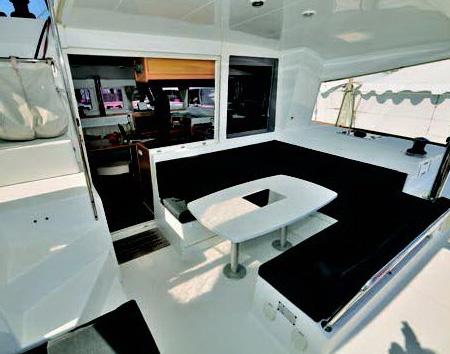
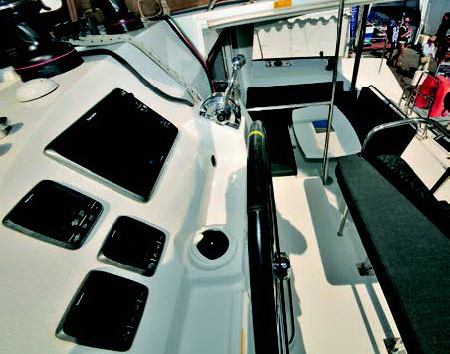
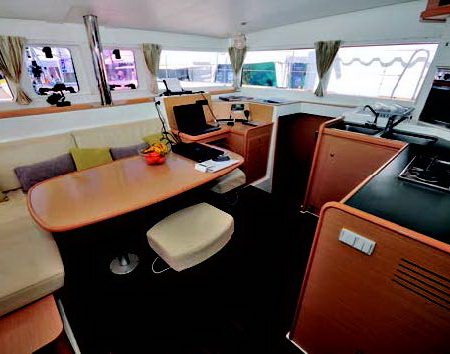
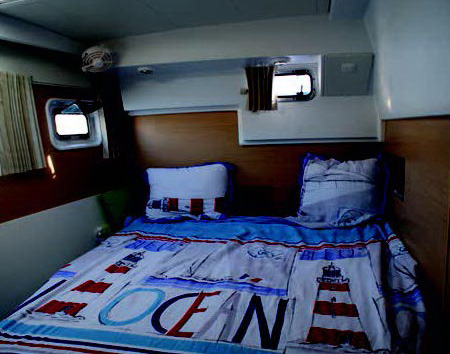
Engine compartments
Back in the days of traditional woo-den boats, it was said that the rot was hidden behind the inaccessible furniture and head linings in the galley and beneath the bridge deck sole, where it was impossible to penetrate after the deck had been laid; Today, the engine compartment can take up the old adage on its own account, negligence and ill-treatment become obvious. On Lagrado, all appears sound, on both port and starboard sides, superficial corrosion of autopilot brackets, connecting rod linkages and transmission coupling bracket is caused by the stagnation of sea-water in the hatch surround above, from which water drains poorly. A soundproofing floor protects the compartment itself (in addition to the watertight hatch, of course!), But oxidation is a formidable predator! The soundproofing floor itself (in plywood) is immune to it. The alternators are in perfect condition, as are the timing case and the cylinder head on these engines, which count 1,800 hours running time. The electrical connectors are sound and the undersides impeccable.
Interior, helm station and bilges
These areas are very exposed to wear and tear over time (and negligence in use). However, Lagrado has brilliantly passed her 15 weeks (minimum) annual charter. The boards show no signs of moisture anywhere (which would show if water had gotten in the bilges, even once, or if a squall struck and the crew had gone ashore having left hatches open). The bilges are clean, the plywood stringers filleted in to the hulls are impeccable, and it is clear that the balsa core is in very good condition. The saloon and the cabins are almost faultless, except for a slight sagging of the saloon cushions. The light oak Alpi trim has been perfectly resistant, as have the faucets and galley equipment (gas cooker, oven, drawers, cupboards). The verdict is identical in the cabins and heads compartments (opening portholes, head linings, light switches). At the helm station, the wheel, the throttles and the bench seat (fabric and structure) are in perfect working order; The electronics (autopilot, chart plotter, wind instrument, depth sounder, log) all work; But the plastic material of the screens has poorly resisted UV (lack of the covers being put back on, or is this brand particularly sensitive to UV?).
Overview
The evaluation is surprising for a charter catamaran which has had about 80 weeks’ use (charterers and owners) in 5 and a half years!The reasons for this very positive state of affairs (which will undoubtedly surprise some readers) are to be found in the professionalism of the people working in the charter industry, which has surpassed the “adventure” of the beginnings of tax exemption in the West Indies. Perhaps also in the respect and care taken by today’s charterers to the boats entrusted to them (under the threat, it is true, of losing their substantial deposits!). Accountability of base managers and the business environment is also a favorable factor because, although often belonging to inter-national groups, the historical culture and know-how of charter companies infuses teams often driven by experienced users and experienced seafarers. They all understood that the situation is a long-term one, and that a charterer one day might be a future partner in a management contract, and that he would entrust his boat to them for resale, or perhaps continue his involvement, with another boat. He is also an opinion former and an advisor to others! So, good working practice really shows through!The choice of location is also an element to be taken into account in the story; Certain maritime regions are more aggressive than others (distance from technical help, tidal range, rocky outcrops, currents, significant distances to the most attractive places, strong winds…); They require more mechanical components (engines, sail drives, rigging, sails, fittings…). The charter companies have mostly understood this, and group themselves around charming destinations which are easy to access. The frequent presence of the owners of Lagrado on their boat, and their active cooperation in the maintenance also constitute a point of understanding and analysis of the very good condition of this boat, which will be available for purchase at the end of the 2017 season. What can be said in conclusion, except that this catamaran offers a very satisfactory state of aging, identical (at least!) to that of a boat managed by a competent owner, and quite superior to many whose upkeep has been improvised by the individual. Lagrado spent the off sea-sons on the hard (5 months), another favorable factor.
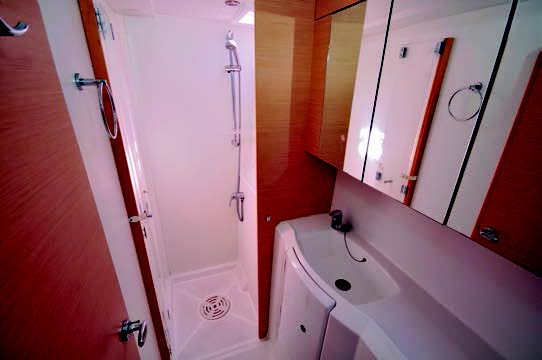
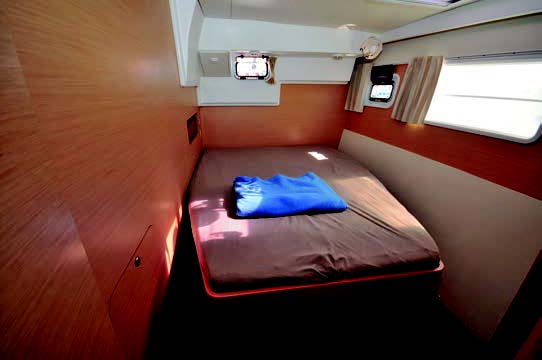
A little tip for prospective purchasers
We are dealing here with a well-built and well-used boat (use and maintenance); There was no damage or incidents reported to the owners or charter company, other than slight bending of the davits which required reinforcement (since corrected by the manufacturer) and the change of one Electric winch (undoubtedly abused when anchoring in strong wind and choppy sea!) And a minor intervention on a sail drive. What will require investment by the buyer at the time of the purchase of this boat, currently up at a price of €240,000 ex-tax? – The rig (with the martingale and the gennaker bridle) should be changed at between 7 and 10 years of age, according to the recommendation of the surveyor and requirements of the future insurer. This will be the perfect opportunity to dismantle the furler and check it. – An oil analysis will confirm the good state of the motors and will alert in case of any concerns. A complete overhaul will be carried out (according to manufacturer’s recommendations: sail drive and engine oil change, raw water impeller, injector check, manifold removal, timing, filters, zinc anodes…).
- The sail drive gaskets should be replaced after 7 years, according to the recommendations of the manufacturer.
- The sail wardrobe should be reviewed by a sail maker
- A polishing pro can restore the appearance back to “as new” (with repairs of scratches or small possible knocks).
- The sea cocks should be replaced after 10 years, or before in case of malfunction or corrosion.
- The autopilot should be returned to the manufacturer for workshop overhaul.
- Dismantling, cleaning or replacing the steering tie rods and brackets.
- Trampolines as recommended by surveyor and / or manufacturer, and subject to condition.
A LITTLE BASIC REMINDER ON CHARTER-MANAGEMENT
Every charter company in the world bases their marketing proposals around two main types of contract:
- The guaranteed income contract.
- The option to buy contract.
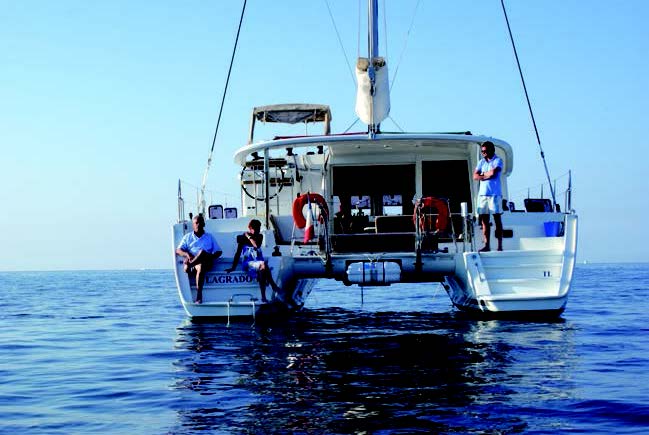
– In the first case (guaranteed income), the purchaser owns the boat that he finances (excluding taxes) directly or on lea-sing (an initial down-payment, variable according to the formula chosen, then about 60 monthly payments). Lease payments (7 to 9% of the new price excluding tax) are made and reduce the monthly amount of the leasing. The differential paid by the charterer is low.
– In the second case (the option to purchase, which is mostly aimed at destinations where it is legally difficult for an individual to own a boat: Greece, Turkey, Thailand, French Polynesia, Croatia…): the company (via their local subsidiary) replaces the buyer, who will pay the boat in one go for about 65% of its new ex-tax value. In this case, there are no lease payments paid, but the “owner” recovers the boat after the 5 or 6 season program and pays the VAT (if necessary) to become the owner, keep it or resell it. He or she can also transfer the vessel to the operator for about 40% of its new ex-tax value, choose another boat and start again with another contract.
– The advantages common to both these options consist of bonuses in the form of free weeks of charter (from 5 to 12, depending on the individual contract) from the charter company’s bases, allowing the owner to be able to benefit from attractive and exotic sailing possibilities. The financial arrangements and price reductions obtained by these professionals also allow opportunities that can’t be obtained by an individual. All the management of the boat is undertaken (berthing, insurance, maintenance, replacement of equipment …) by competent teams who have an obligation to achieve a result through operating the boat, and at the end of contract there are various possibilities offered (resale, taking back the boat, continuing on…). The current trend seems to be for some contracts to be personalized and adapted to suit the lifestyle and sailing requirements of owners, such as options allowing for a sabbatical year or the use of the boat on a maximum number of weekends, or a complete sabbatical winter.
The specifics of Lagrado’s situation: a management contract with deferred sale
Lagrado’s owners have signed a deferred sales contract and put their Lagoon 400 with the Kiriacoulis-Amure base at Bormes-les-Mimosas, on France’s Mediterranean coast. The price of the boat was €391,000 ex-tax.
Kiriacoulis financed €170,000. The future owner therefore paid 55% of the cost of the boat; The boat is French-flagged. The simplified calculation made with them at the Multihull Show for the beginning of the 6th year of operation is as follows:
Owner’s down-payment 55% (€221,000), from which the 5 weeks of sailing that they benefited from (equivalent to €3500 / week x 5 weeks x 6 years), €105,000, maintenance (marina costs, haul out maintenance, winter dry-storage, hoisting, insurance, etc.), coming to €108,000 over the period; So the €390,000 (ex-tax) boat tax really costs €177,000 ex-tax, and its resale value is estimated at €240,000 ex-tax at the end of its 7th season! At the end of the contract they have the choice between paying VAT on their initial payment and selling the boat (with the possibility of leasing for the purchaser), or returning for another contract on the boat of their choice, within the limits of the charter company’s proposals), the value of the existing boat serving as a contribution.
What the owners had to say when we met them at the 2017 International Multihull Show:
We are pleased with the way things have worked out with Lagrado. We have not fully used our option of 5 weeks’ sailing a year, and we will be starting again with a new contract. We were pleased with the good owner-manager relations-hip; Living at a short distance from the boat, it was easy for us to participate in her maintenance in keeping her good condition. Overall, we’ve analyzed the experience and concluded we need to sail more! However, we did have a period of worry during the first few weeks of charter, but then this feeling subsided with time and increased confidence.
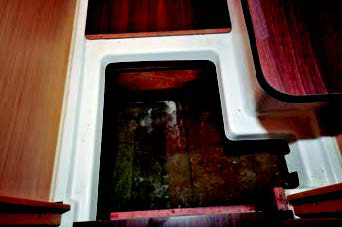
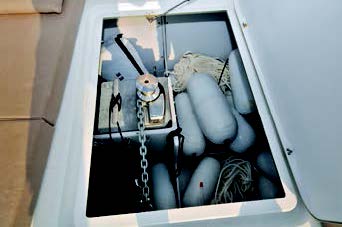
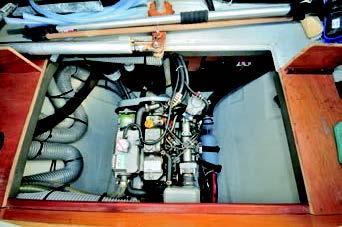
Some other examples.
Moorings / Sunsail: 21 bases or destinations
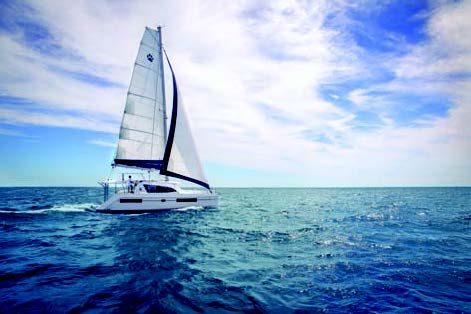
Leopard Sunsail 404 in Saint-Martin on guaranteed income contract:
Public cost price of the boat ex-tax: €435,000
Special Multihull Show discount: €45,000
Sale price ex-tax €390,000
1st monthly installment / contribution 21%: €80,000
Duration of the program: 59 months
Monthly guaranteed income: €2,995
Monthly cost of leasing: €3,473
Net cost to the owner: €548
Buy-back figure at the end of the contract: €175,087
Total cost including the buy-back for the owner: €287,428
Estimated resale value: €220,000 ex-tax
Theoretical value of the possible 12 weeks per year: €300,000
Leopard Sunsail 404 in Greece on a deferred sales contract without income:
Public price HT of the boat: €435,000
Initial payment 45%: €184,500
Final payment 20% (or refund of this sum by the company if chosen by the owner): €82,000
Duration of program: 65 months
Estimated resale value: €220,000 ex-tax
Owner’s use: 4 to 12 weeks
Operating cost: Nil
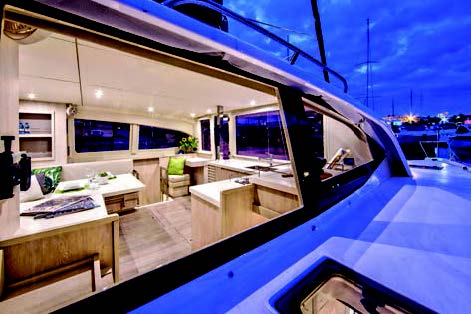
Dream Yacht Charter (45 bases)
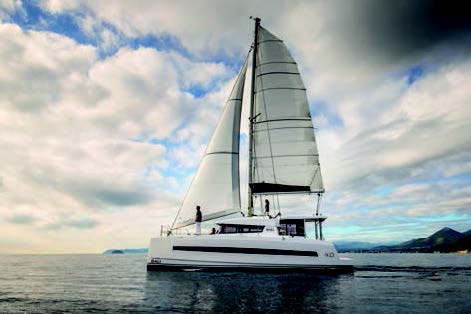
Bali 4.0 in Cuba / Cienfuegos on guaranteed income contract
Public price ex-tax of the boat: €447,509
30% down-payment: €134,252.70
Monthly guaranteed income: €3,356
Duration of the program: 60 months
Monthly leasing cost: €3,483
Net cost to the owner: €127
Total cost of the investment at the end of the contract: €141,872.70
Estimated resale value: €223,000
Theoretical value of the 12 weeks annual sailing: €252,000
Bali 4.0 in Cuba / Cienfuegos on a deferred sale contract without income
Total public price ex-tax: €447,509
35% down-payment: €156,628
Monthly financing: €0
Operating expenses: €0
Final buy-back value of 25%: €111,877
Total investment cost: €268,505
Estimated resale value: €223,000
Contract duration: 60 months
Theoretical value of the eight annual weeks’ sailing: €180,000
